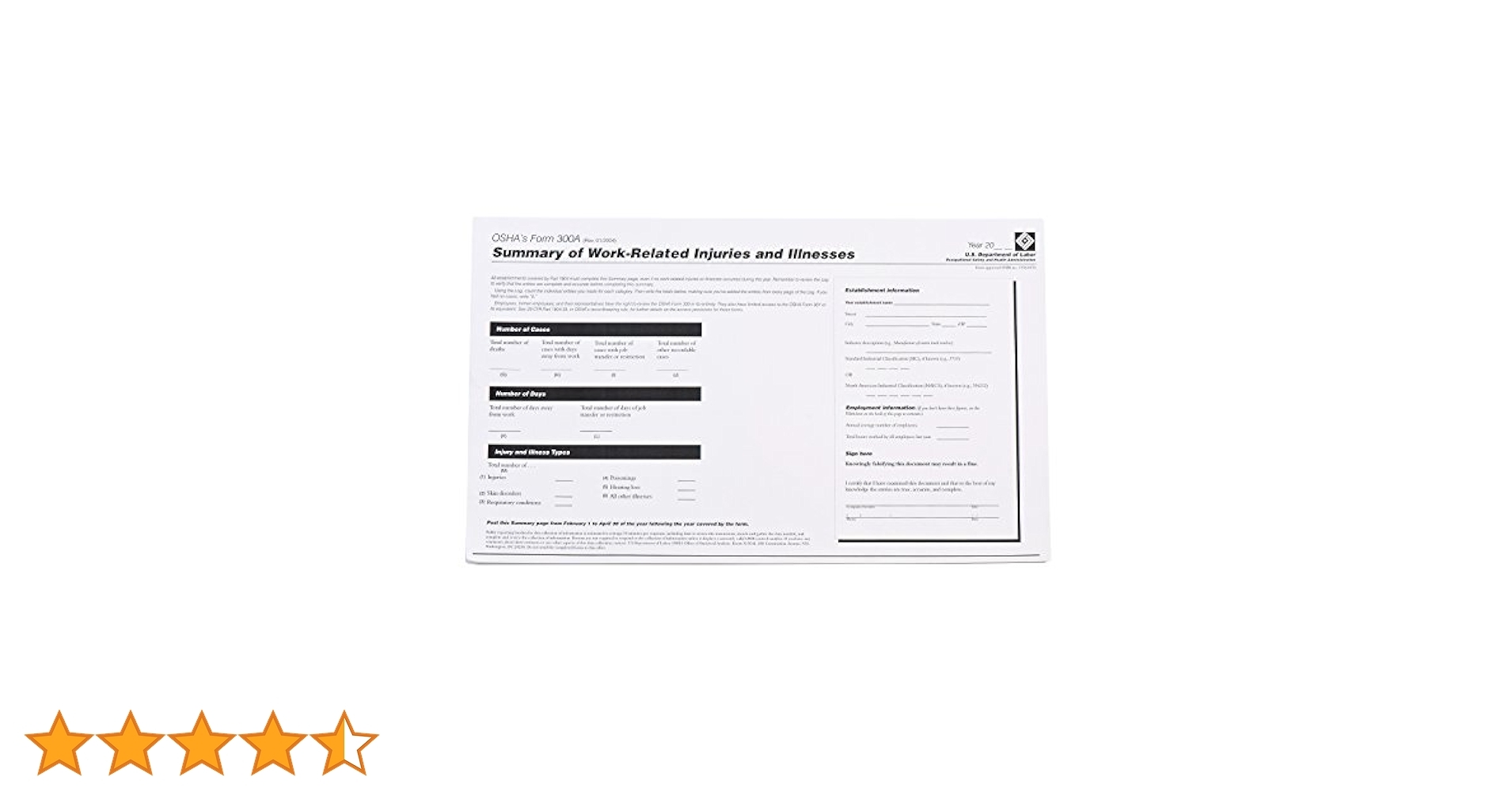When it comes to workplace safety, it is crucial for businesses to comply with OSHA regulations. One important requirement is the OSHA Form 300a, which provides a summary of the total number of job-related injuries and illnesses that occurred in the previous year. This form must be posted in a visible location in the workplace to inform employees and visitors about the company’s safety record.
Employers with more than 10 employees are required to keep track of workplace injuries and illnesses, and complete the OSHA Form 300a annually. This form is a key component of OSHA’s recordkeeping requirements, and helps to ensure that businesses are taking the necessary steps to protect their workers from hazards and maintain a safe working environment.
Completing the OSHA Form 300a involves recording the number of injuries, illnesses, and days away from work that occurred during the reporting year. This information must be compiled from the OSHA Form 300, which provides more detailed data on each individual incident. Once the Form 300a is completed, it must be posted in the workplace from February 1st to April 30th each year.
By making the OSHA Form 300a readily available to employees, businesses can demonstrate their commitment to workplace safety and transparency. This form not only helps to keep workers informed about potential hazards in the workplace, but also serves as a tool for employers to identify trends and implement preventative measures to reduce the risk of future incidents.
Overall, the OSHA Form 300a is a valuable resource for businesses to track and report workplace injuries and illnesses, and promote a culture of safety within the organization. By prioritizing workplace safety and compliance with OSHA regulations, businesses can protect their employees, avoid costly fines, and maintain a positive reputation in the industry.
In conclusion, the OSHA Form 300a plays a vital role in ensuring workplace safety and compliance with OSHA regulations. By completing and posting this form annually, businesses can keep employees informed about the company’s safety record and take proactive measures to prevent future incidents. Prioritizing worker safety is not only a legal requirement, but also a moral obligation for businesses to protect their most valuable asset – their employees.
